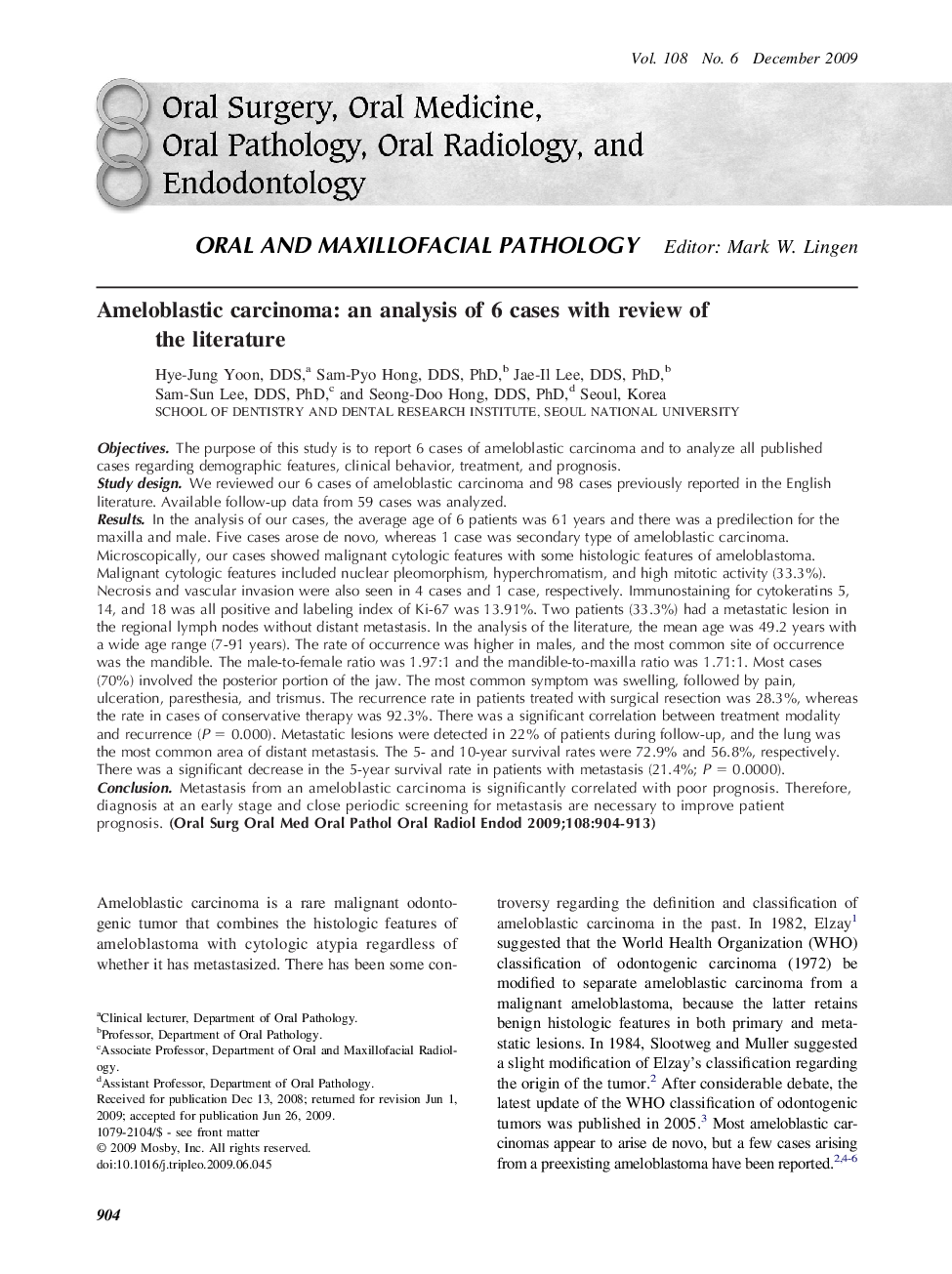| Article ID | Journal | Published Year | Pages | File Type |
|---|---|---|---|---|
| 3167788 | Oral Surgery, Oral Medicine, Oral Pathology, Oral Radiology, and Endodontology | 2009 | 10 Pages |
ObjectivesThe purpose of this study is to report 6 cases of ameloblastic carcinoma and to analyze all published cases regarding demographic features, clinical behavior, treatment, and prognosis.Study designWe reviewed our 6 cases of ameloblastic carcinoma and 98 cases previously reported in the English literature. Available follow-up data from 59 cases was analyzed.ResultsIn the analysis of our cases, the average age of 6 patients was 61 years and there was a predilection for the maxilla and male. Five cases arose de novo, whereas 1 case was secondary type of ameloblastic carcinoma. Microscopically, our cases showed malignant cytologic features with some histologic features of ameloblastoma. Malignant cytologic features included nuclear pleomorphism, hyperchromatism, and high mitotic activity (33.3%). Necrosis and vascular invasion were also seen in 4 cases and 1 case, respectively. Immunostaining for cytokeratins 5, 14, and 18 was all positive and labeling index of Ki-67 was 13.91%. Two patients (33.3%) had a metastatic lesion in the regional lymph nodes without distant metastasis. In the analysis of the literature, the mean age was 49.2 years with a wide age range (7-91 years). The rate of occurrence was higher in males, and the most common site of occurrence was the mandible. The male-to-female ratio was 1.97:1 and the mandible-to-maxilla ratio was 1.71:1. Most cases (70%) involved the posterior portion of the jaw. The most common symptom was swelling, followed by pain, ulceration, paresthesia, and trismus. The recurrence rate in patients treated with surgical resection was 28.3%, whereas the rate in cases of conservative therapy was 92.3%. There was a significant correlation between treatment modality and recurrence (P = 0.000). Metastatic lesions were detected in 22% of patients during follow-up, and the lung was the most common area of distant metastasis. The 5- and 10-year survival rates were 72.9% and 56.8%, respectively. There was a significant decrease in the 5-year survival rate in patients with metastasis (21.4%; P = 0.0000).ConclusionMetastasis from an ameloblastic carcinoma is significantly correlated with poor prognosis. Therefore, diagnosis at an early stage and close periodic screening for metastasis are necessary to improve patient prognosis.
